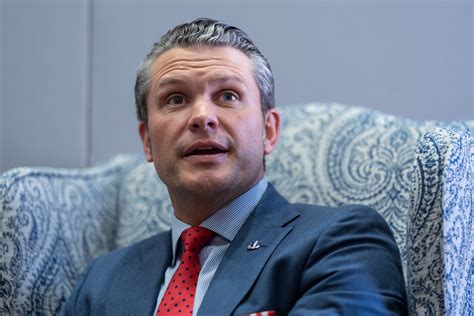President Donald Trump and Defense Secretary Pete Hegseth stirred up a storm recently with their groundbreaking announcement of a record-breaking $1 trillion defense budget proposal. The news sent shockwaves through Washington, setting the stage for what could potentially be a game-changer in the realm of national security funding.
In an unexpected move that caught many by surprise, Trump made the revelation during a joint press event with Israeli Prime Minister Benjamin Netanyahu. With unwavering confidence, he declared that the upcoming defense budget would soar to unprecedented heights, hovering around the staggering figure of $1 trillion.
Hegseth, not one to shy away from bold statements, took to social media to amplify the message. In a post that quickly went viral, he emphasized Trump’s commitment to revitalizing the military at an astonishing pace.
“COMING SOON: the first TRILLION dollar @DeptofDefense budget,”
he exclaimed, assuring taxpayers that every dollar would be judiciously allocated towards enhancing combat effectiveness and operational readiness.
The proposed budget marks a substantial increase from the current allocation of $892 billion earmarked by Congress for national defense initiatives this year. This financial boost encompasses funding for various components such as Pentagon operations, nuclear weapons development, and security programs spanning across different government agencies.
As anticipation mounts over this monumental budgetary shift, speculations abound regarding how this influx of resources will be utilized within the military landscape. With plans underway to streamline operational efficiency and modernize existing capabilities, it is evident that significant transformations are on the horizon for the armed forces.
In line with this ambitious agenda, Hegseth is spearheading efforts to restructure departmental operations by reducing civilian staff numbers on a global scale. This strategic downsizing aims to pave the way for consolidating both domestic and overseas facilities under a unified framework geared towards enhancing operational agility.
While details surrounding the comprehensive breakdown of this colossal budget remain veiled in mystery until its anticipated unveiling in late May, one thing is certain – its implications extend far beyond mere figures on paper. The sheer magnitude of this financial commitment underscores Trump’s unwavering dedication to fortifying national security amidst evolving geopolitical challenges.
Reflecting on this groundbreaking development, Trump reiterated his steadfast resolve in bolstering America’s military prowess against looming threats.
“We have to build our military; you’ve got bad forces out there now,”
he remarked emphatically during interactions with reporters. This resolute stance underscores his administration’s proactive approach towards safeguarding American interests in an increasingly volatile global landscape.
Meanwhile, on Capitol Hill, Republicans are charting their course towards augmenting defense spending through proposed interim budget increments ranging from $100 billion to $150 billion. This legislative maneuver forms part of broader partisan strategies aimed at ramping up military capabilities while concurrently addressing border security concerns and tax reform initiatives.
As deliberations unfold within legislative chambers regarding final appropriation figures, it remains clear that heightened focus on bolstering national defense capabilities lies at the heart of bipartisan discussions surrounding fiscal priorities. The road ahead promises intricate negotiations and strategic alignments as policymakers navigate complex terrain in steering federal appropriations towards fortifying America’s security posture on a global scale.




Leave feedback about this